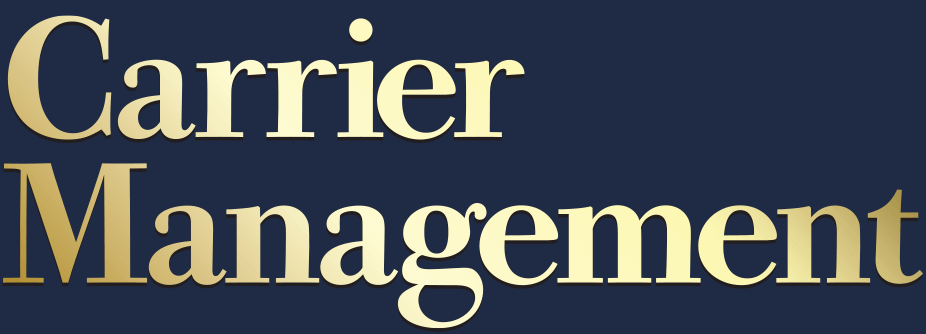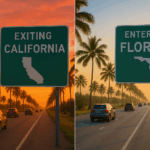“Too big to fail”—a phrase associated with interconnected publicly traded financial services companies in the wake of the 2008 financial crisis—was revived in a new context last week.
Executive Summary
During a three-day hearing about State Farm General’s request for an interim emergency homeowners insurance rate increase last week, testimony centered on the financial condition of the California affiliate of State Farm Mutual Automobile Insurance Company.There was much less discussion of factors used to develop and trend catastrophe and non-catastrophe losses to support an indicated double-digit rate increase.
During a hearing about State Farm General’s request for an interim emergency homeowners insurance rate increase last week, an attorney for a consumer group used those words to sum up the case put forth by the California affiliate of the nation’s largest mutual insurer.
“Too big to fail is not a legal argument. It’s a scare tactic [based on] a parade of speculative horribles,” said William Pletcher, lead attorney for Consumer Watchdog (CW), which is serving as the intervenor in accordance with provisions of Proposition 103, California’s decades-old prior approval law for insurance rates.
The “horribles” referenced by Pletcher during his closing arguments on April 10 included the possibilities that 680,000 homeowners with State Farm General policies and mortgages would be forced to pay more for inferior FAIR Plan coverage (and additional difference-in-conditions policies to fill in FAIR Plan gaps) should Standard & Poor’s downgrade the insurer’s financial strength rating, that State Farm General would ultimately fail, and that the entire market would collapse in the absence of its biggest player, making homeowners insurance unavailable in the state.
While Carrier Management did not hear any attorneys or witnesses for State Farm General (SFG) or the California Department of Insurance (CDI) actually use the term “too big to fail” during the three-day hearing, Pletcher used it to describe the gist of arguments about systemic collapse made to Administrative Law Judge Karl-Fredric Seligman by the insurer and the regulator. The judge is charged with delivering a recommendation to California Insurance Commissioner Ricardo Lara on whether to adopt or amend a stipulation between SFG and CDI under which the insurer would be allowed to raise homeowners rates by 17.0 percent, and SFG’s parent, State Farm Mutual Automobile Insurance Company, would shore up SFG’s capital base with a $400 million surplus note. (The stipulation also posits interim rate increases of 15 percent for tenants policies and 38 percent for rental dwelling policies.)
State Farm wants the court to “approve an interim rate hike now, and then [to] prove up its rates later due to State Farm’s financial pressures and market concerns, not because of a demonstrated need under the rate formula,” Pletcher said, referring to the fact that the 17 percent is proposed on an emergency basis, until a full rate hearing can take place.
(Attorneys and witnesses for SFG and CDI said another provision of the stipulation, which would require SFG to refund policyholders—with interest—if the 17 percent proves to be excessive, minimizes the risk to policyholders. See related article, “Is State Farm General a Sinking Ship? California Emergency Rate Request Dropped to 17%” for some of the debate on that point and other Day 1 hearing details.)
CW is arguing “that all rate increases must be legally justified and factually supported with the burden on the insurer to provide that support through actuarial analysis. If an interim rate is requested, the insurer must first show actuarially that their rate is ‘plainly invalid’… That’s how we prove up rate in rate proceedings—through actuarial work, not through appeals to financial conditions or risks,” Pletcher said.
The extent of actuarial analysis required to support the stipulation remained a subject of debate during the hearing. Lawyers for CW argued that there needs to be a ratemaking analysis (comparing premiums to developed and trended losses on a prior-approval rate template) to show “plainly invalid rates.” The “plainly invalid” language comes from a 1989 Supreme Court of California decision outlining the commissioner’s power to grant interim rate relief (Calfarm Ins. Co. v. Deukmejian). CDI and SFG take the position that a provision in the California Code of Regulations (CCR) regarding Proposed Stipulations and Settlements governs the process instead. That requires a showing to the ALJ that a stipulation is “fundamentally fair, adequate, reasonable and in the interests of justice” (Cal. Code Regs. Tit. 10, § 2656.1 – Proposal of Stipulations or Settlements).
“Approving the stipulation is in the interests of justice because it will help State Farm General’s policyholders and the California insurance market as a whole,” said Katherine Wellington, an attorney from the law firm Hogan Lovells U.S. LLP representing State Farm General, in her closing argument.
Putting the technicalities aside, Pletcher voiced a bigger concern during his closing arguments.
“Every mudslide, wildfire, major atmospheric river event…could open the floodgates to insurers demanding emergency interim rate hikes based solely on temporary financial setbacks or market fears,” he said, noting the regularity with which such events are occurring.
“State Farm is the largest insurer, but the second, the third, the fourth largest insurers were also impacted by the recent LA wildfires,” he said. “They should not qualify for emergency increases without actuarial support either,” he concluded.
No Universe Where This Makes Sense
In fact, as Pletcher noted in his summation, only one actuary actually spoke about the validity of factors and data used in actuarial ratemaking calculations during the hearing. That actuary, Ben Armstrong, testifying on behalf of the consumer group on the second day of the hearing, had reviewed SFG’s support for a 22 percent increase provisionally approved by Lara in March, and also a June 2024 filing for a 30 percent increase that was the original basis for the request. His own judgments and calculations, he testified, could also support rate decreases as high as 27 percent, suggesting that SFG’s current rates are not invalid.
“Every mudslide, wildfire, major atmospheric river event…could open the floodgates to insurers demanding emergency interim rate hikes based solely on temporary financial setbacks or market fears,” Consumer Watchdog’s lawyer said.
Unlike Armstong, the only other actuary to testify during the hearing, CDI’s chief actuary Tina Shaw, said she did not review specific provisions such as catastrophe loads, development or trend factors used to derive SFG’s indicated rate need. Opining solely on the stipulated combination of a 17 percent hike and a $400 million capital infusion, Shaw recommends its acceptance.
“I took a holistic approach,” she said, noting that this involved looking at SFG’s current financial situation. She explained that the insurer’s original June 2024 rate filing included “a Variance 6 request,” referring to a CCR provision that allows an insurer to deviate from strict application from the Prop 103 ratemaking regulations to protect its solvency (Cal. Code Regs. Tit. 10, § 2644.27 – Variance Request, Variance 6). Supporting the variance request, SFG said that its “surplus had decreased to a level that was alarming to the Illinois Department of Insurance, that they’re on company action plan, that they need to have a plan to restore their capital,” Shaw reported.
“With the LA wildfires in January, I understand that their capital position had deteriorated further and now that their solvency position could be—is even worse than when they first filed the June filing,” Shaw said.

Shaw views the proposed 17 percent hike to be “an emergency stopgap measure to make sure, along with the surplus notes that the parent is offering, that State Farm General can get to a soft landing,” she testified. “The commissioner has ordered data as of Q1 2025 to be submitted to the department so that we can fully vet all the details, the assumptions and the methodology in the filing to make sure that we keep State Farm honest,” she said, noting that a finding that the rate is excessive will necessitate returns back to policyholders with interest.
“There is no universe in which a 25 percent rate decrease is appropriate given the circumstances here,” a lawyer for State Farm General said.
While SFG presented two witnesses, an economist (who also spoke to the deteriorating financial condition) and a reinsurance expert (who refuted some CW assertions that bad business decisions caused SFG’s current solvency problems), SFG’s sole witness with actuarial credentials was excluded from the proceedings. Nancy Watkins, a consultant for Milliman, had recently consulted with CDI on the development and implementation of new ratemaking regulations that are part of Commissioner Lara’s Sustainable Insurance Strategy, prompting CDI to file a motion to exclude her. Watkins tore apart Armstrong’s judgments in a pre-hearing declaration, but CDI feared that cross-examination by CW at the hearing would elicit CDI’s confidential information.
During Armstrong’s testimony, under questioning by one of SFG’s lawyers, Jordan Teti of Hogan Lovells, Armstrong admitted that some of the scenarios he created to test SFG’s development and trend assumptions were incorrect. In her closing argument for SFG, the other member of SFG’s legal team, Wellington, highlighted the errors.
“Consumer Watchdog’s actuary reached completely unreasonable conclusions about the lawful range of rate indications, including the view that reducing State Farm General’s current rates by as much as 25 percent would be lawful and within the zone of reasonableness. That cannot possibly be right.”
“There is no universe in which a 25 percent rate decrease is appropriate given the circumstances here,” she said.
Armstrong’s “actuarial analysis simply cannot be relied on,” Wellington said, noting that correcting for the errors Armstrong acknowledged, the maximum rate indication changes from negative 0.1 percent to plus 7 percent.
She did not mention that the minimum rate indication, corrected for the errors, is still a negative 22 percent, according to Armstrong’s declaration.
(Editor’s Note: There were three homeowners rate indications discussed during the hearing at different points.
In June 2024, SFG originally filed for a 30 percent increase, in part, justifying that with reference to a section of the CCR that allows variance from the maximum permitted earned premium “in order to protect the insurer’s solvency” (Cal. Code Regs. Tit. 10, § 2644.27 – Variance Request, Variance 6).
Absent the Variance 6 request, the indicated change was a 10 percent decrease according to a table included in a Feb. 3, 2025, letter to Commissioner Lara. The table updated that prior template indication with a new catastrophe load incorporating loss estimates for the LA fires, resulting in an indicated 21.8 percent increase.
In an April 4, 2025, stipulation, CDI and SFG agreed to a reduced increase—17 percent—in conjunction with State Farm Mutual providing a $400 million surplus note to SFG.)
Buying Time
 “State Farm General has paid more in claims than it has collected in premiums for many years. That’s basic math. And we’re trying to fix the equation through the interim rate increases,” Wellington said. At one point in her summation, she also debunked an idea advanced by Armstrong that SFG created its own problems by failing to file for rate hikes in past years. That “suggests Consumer Watchdog believes that State Farm General’s rates should be higher now… And to be frank, a significant reason State Farm General has not been able to obtain the rate increases needed in years past is because of the inherent challenges with obtaining rate increases in California,” she said, noting that litigation over the insurer’s 2014 was not resolved until 2022.
“State Farm General has paid more in claims than it has collected in premiums for many years. That’s basic math. And we’re trying to fix the equation through the interim rate increases,” Wellington said. At one point in her summation, she also debunked an idea advanced by Armstrong that SFG created its own problems by failing to file for rate hikes in past years. That “suggests Consumer Watchdog believes that State Farm General’s rates should be higher now… And to be frank, a significant reason State Farm General has not been able to obtain the rate increases needed in years past is because of the inherent challenges with obtaining rate increases in California,” she said, noting that litigation over the insurer’s 2014 was not resolved until 2022.
“We’re not trying to execute a long-term fix here,” said Nikki McKennedy, an attorney for CDI, during her closing arguments. “We are trying to buy time so that the Department, State Farm General, and hopefully consumer representatives including Consumer Watchdog can work together collaboratively to execute broader fixes so that State Farm General doesn’t continue to have these problems. But we can’t do that if State Farm General goes bankrupt in the meantime.”
“A significant reason State Farm General has not been able to obtain the rate increases needed in years past is because of the inherent challenges with obtaining rate increases in California.”
State Farm General Attorney Katherine Wellington
Shaw, a former chief risk officer who also created a capital modeling financial analysis unit for Farmers in her previous industry roles, testified that with estimated surplus levels somewhere between $600 million and $1 billion today, SFG should be writing $600 million to $1 billon in premiums—not the $3 billion that it wrote in 2024. “This is very troubling to me because we want to keep State Farm in the marketplace to continue to offer insurance to policyholders. If they’re not able to, then I think it would really disrupt the entire marketplace,” she said.
“Why is that?” McKennedy asked.
Shaw noted the likelihood that a FAIR Plan fire policy with a wraparound for other perils would be the only option for nonrenewed customers, likely increasing their premiums more than 17 percent—if they can find other insurance. Shaw added that whenever her CDI actuarial staff processes a rate increase, “the second question we ask is if you’d be opening up your book to writing new business.”
“So far, we haven’t had any takers. Based on that, we know that the California homeowners market is currently in a crisis,” she said.
Unanswered Questions
The ALJ has a monumental task before him, wading through interpretations of “plainly invalid” and “fair and reasonable” standards, and other technical issues not described here (like whether testimony about risk-based capital ratios is admissible) in order to answer the central question before him: Has SFG justified its request for a double-digit emergency interim rate increase?
Is consideration of SFG’s financial condition enough?
“These broader systemic problems, like other too-big-to-fail problems, need a whole of government response. They belong with the legislature, with the governor, the insurance commissioner through his market conduct powers, but they can’t be allowed to be relevant in a rate hearing.”
William Pletcher, Attorney for Consumer Watchdog
“When we say these issues aren’t relevant here, we aren’t saying they aren’t important,” Pletcher said in his closing argument. “We’re just saying these broader systemic problems, like other too-big-to-fail problems, need a whole of government response. They belong with the legislature, with the governor, the insurance commissioner through his market conduct powers, but they don’t belong and can’t be allowed to be relevant here in a rate hearing,” he said, also repeating a part of Shaw’s testimony in which she stated that the increased rates are unlikely to be sufficient to improve State Farm’s financial condition over the long term.
“Why implement a cure that won’t work?” he asked.
The question was among many that remained unanswered, while others were not asked at all.
What if the parent company raised the capital contribution to $500 million, CW Attorney Pamela Pressley asked Shaw at one point, also quizzing the department’s actuary on whether a lower rate increase number, say 9 percent, would be sufficient to assure that State Farm remains financially stable. Unable to answer now, Shaw responded that her detailed analysis will be based on updated information when it’s provided to her.
McKennedy noted that State Farm might ultimately prove it’s entitled to a homeowners rate increase as high as 30 percent, while CW lawyers insisted that an analysis of ratemaking factors like trend, cat loads and loss development factors would show that SFG’s rates are not plainly invalid, rejecting the idea that an analysis of financial condition is a valid actuarial one in this situation.
No one asked or offered testimony on whether SFG’s rates would be plainly invalid under a modernized ratemaking process that allows catastrophe modeling and a provision for reinsurance to be used for actuarial analysis.
Unasked Question: Are SFG’s rates “plainly invalid” when analyzed with a modernized process that allows for the use of catastrophe models and a provision for reinsurance?
The process under which SFG originally filed for an increase in June is one that Commissioner Lara has said is outdated. “These outdated rules have contributed to rate spikes and balloon premiums following major wildfire disasters without fully accounting for the growing risk caused by climate change or risk mitigation measures taken by communities or regionally, as a result of local, state, and federal investments,” Lara stated, in his announcement of the final regulations on cat model use last year.
A final question: If an interim rate is approved now, what happens in 2026?
Pressley and Pletcher both asked this question in different ways, with Pressley asking whether SFG would someday take back customers who had to drop coverage that the 17 percent hike made unaffordable, and Pletcher noting that the stipulation offers no guarantee that customers won’t be dropped after the agreed-upon nonrenewal periods end.





















 Legal Finance and Insurance: From Confusion to Collaboration
Legal Finance and Insurance: From Confusion to Collaboration  Rebuilding Negotiation Talent: Why This Skill Is Missing and How to Fix It
Rebuilding Negotiation Talent: Why This Skill Is Missing and How to Fix It  How One MGU Grew Fivefold When Capacity Fled Cat-Prone Property Markets
How One MGU Grew Fivefold When Capacity Fled Cat-Prone Property Markets  A Practical Blueprint: The Five Plays of an Innovation Culture
A Practical Blueprint: The Five Plays of an Innovation Culture 














